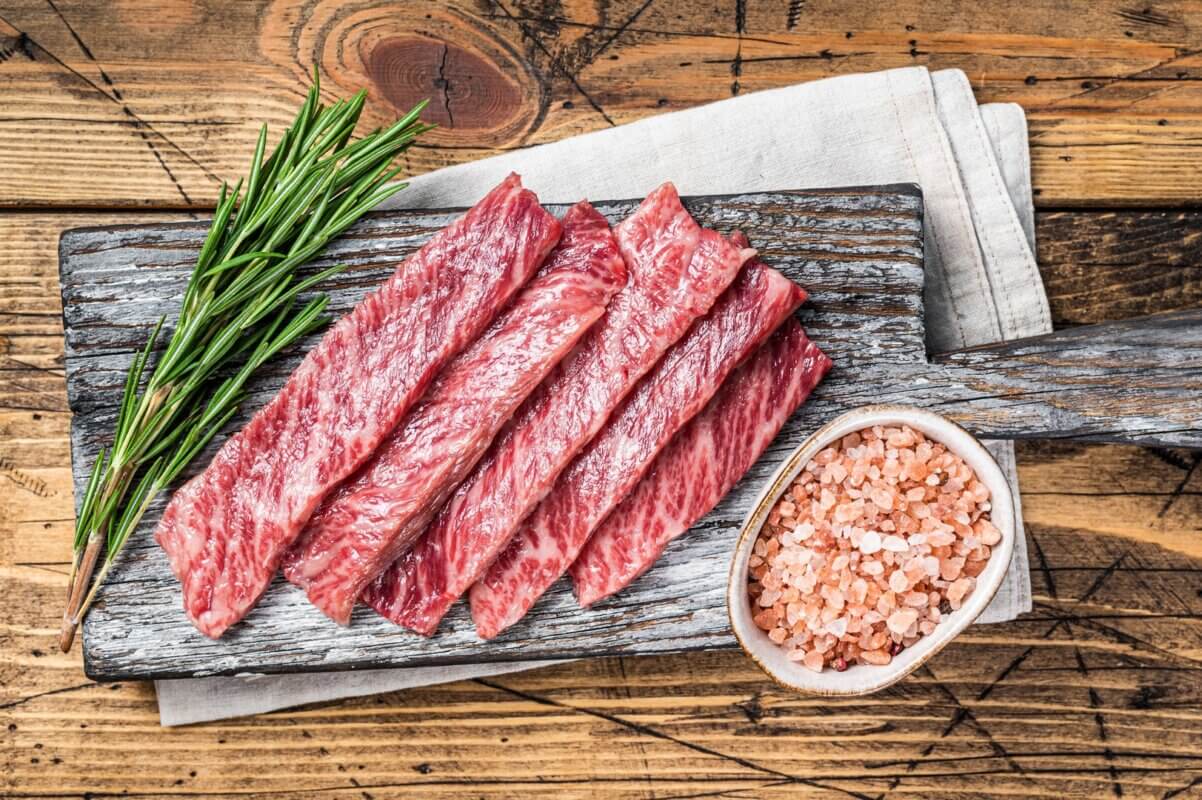
When folk inquire, “What is Wagyu beef?” they regularly mention a product that has become a symbol of deluxe and opulence due to its exceptional quality and high price tag. This story investigates the history, qualities, and distinctive facets that make this beef an intensely coveted delicacy.
“Wagyu” refers to cattle that originate from Japan, with “Wa” meaning Japanese and “gyu” translating to cow. However, it’s crucial to recognize that not every cow from Japan qualifies as Wagyu. The Japanese government has established strict standards that beef must meet to receive the prestigious designation rightfully.
The Origin of Wagyu
Cattle with this lineage can trace its roots back to centuries in Japan. While the raising of these cattle first began for farming needs, eventually, the Japanese found that these cattle possessed uncommon genetic traits. As an island country, Japan played an essential part in maintaining the {gene pool in its pure, undiluted state—a significant reason behind its distinguishing characteristics.
The importance of cattle for beef in Japan is deeply embedded in its cultural and geographical surroundings. The breed was initially utilized in farming, and its usage in meat manufacturing was only supplementary. The Japanese administration has even announced these cows a national prize and has prohibited their export to safeguard their lineage.
What Makes Wagyu Unique?
What makes this meat special comes from its genetic makeup, diet, and the soft flecks of fat found within the muscle. The animal’s genes, diet plan consisting of certain foods, and the streaks of fat running through the meat give it qualities that set it apart. Its hereditary background is carefully chosen.
- Genetics and Breeding
The most crucial factor that sets Wagyu cattle apart is their genetics. These cows naturally have a tendency to develop rich marbling throughout their muscles; a trait passed down through generations. This marbling results in exceptionally tender and flavorful beef with marbled fat evenly distributed throughout. - Feeding and Care Routines
These cattle are raised using specific feeding methods. The calves first graze freely to develop their physiques. Later, they switch to a grain-rich diet to increase the marbling in their meat. The rearing process is slow and gradual, often taking close to three years – much more time than typical beef cattle require. - Marbling and Quality Grades
The marbling in Wagyu beef is a benchmark of its quality. In fact, in Japan, strict grading systems are in place to classify the quality of this meat. This grading system is based on the degree of marbling, the color of the meat, the fat’s quality, and the weight of the carcass. The highest grade is A5, indicating the highest level of marbling and superior meat quality.
Types of Wagyu Beef
The different kinds of Wagyu beef come from varying areas and nations, each possessing their exceptional traits and taste profiles. Let us examine some of the noteworthy types of Wagyu in more detail:
What is Japanese Wagyu
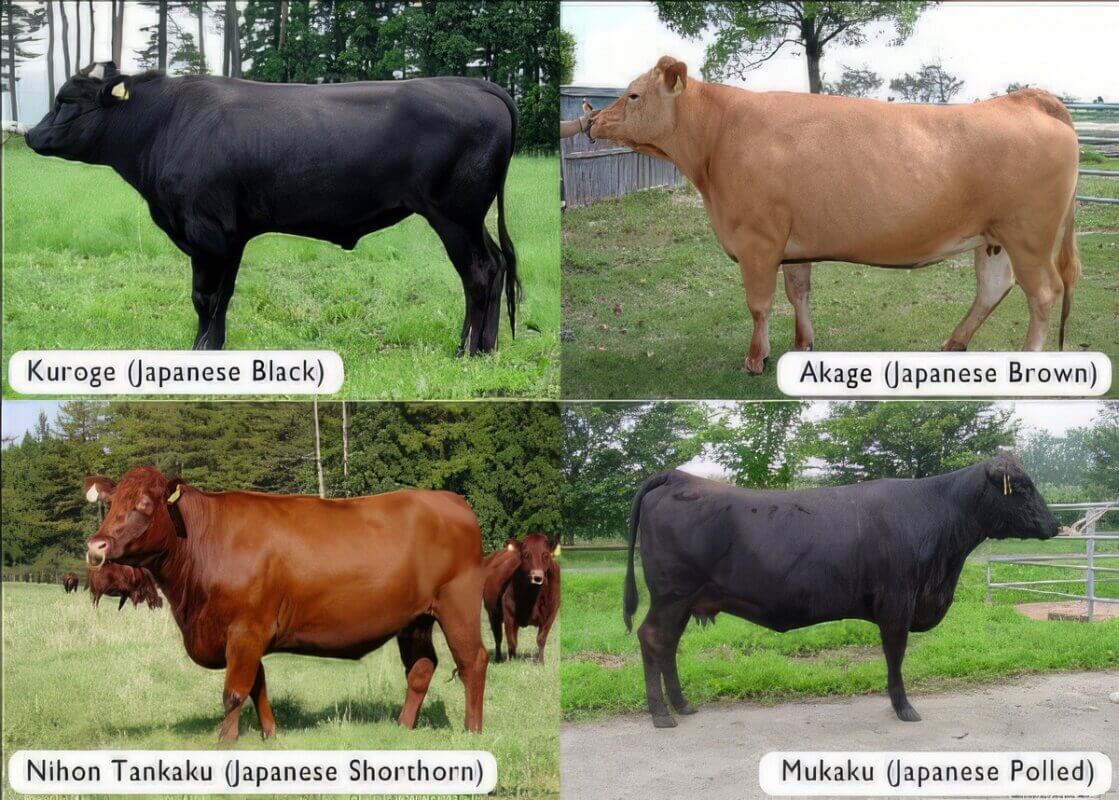
Japan is well known as the original home of Wagyu cattle. The country boasts several regional breeds that are widely famous and highly valued. Some of the most renowned Japanese Wagyu varieties include:
- Kobe Beef
From the Tajima cattle breed raised in Hyogo Prefecture, Japan, Kobe beef is a renowned culinary icon. Kobe beef is famous for its exceptional marbling – the distribution of fat within the muscle – resulting in an incredibly tender and exquisitely flavored mouthfeel that has become its hallmark. This flawless marbling not only gives the beef a delectable taste but also contributes to its signature texture that melts in your mouth. Kobe beef’s international reputation as one of the finest Wagyu varieties is well-deserved, with food enthusiasts worldwide seeking out this luxurious meat. - Matsusaka Beef
Matsusaka beef hails from Mie Prefecture and is another top-grade Wagyu cut that enjoys global acclaim. Cherished for its profound marbling, it has an intensely rich taste described as umami at its pinnacle. Its texture is velvety as tender, ensuring a memorable gastronomic experience in every way. The pleasure of Matsusaka beef is not solely for individual consumption—chefs also highly value its quality and versatility across diverse dishes. - Omi Beef
Omi beef from Shiga Prefecture commands particular respect among Wagyu. Renowned for outstanding marbling and delicate texture, it epitomizes Japan’s refined flavors. What sets it apart is records dating over 400 years, making it one of Japan’s oldest beef brands. This storied pedigree combined with mouthwatering taste and quality render Omi beef a coveted delicacy. - Hida Beef
Hida beef originates from Gifu Prefecture and may not receive as much fame as Kobe or Matsusaka beef, though its quality and flavor are equally delectable. The beef comes from Hida Japanese Black cattle that are only certified if raised for over fourteen months in Gifu’s lands. Renowned for its marbling, the fat distributes a rich and unique taste throughout the meat. As one chews, the marbled fat dissolves, providing an incomparably tender and creamy texture. Due to its entire body of flavor and exquisite taste, connoisseurs worldwide cherish Hida beef as a delicacy.
What is American Wagyu
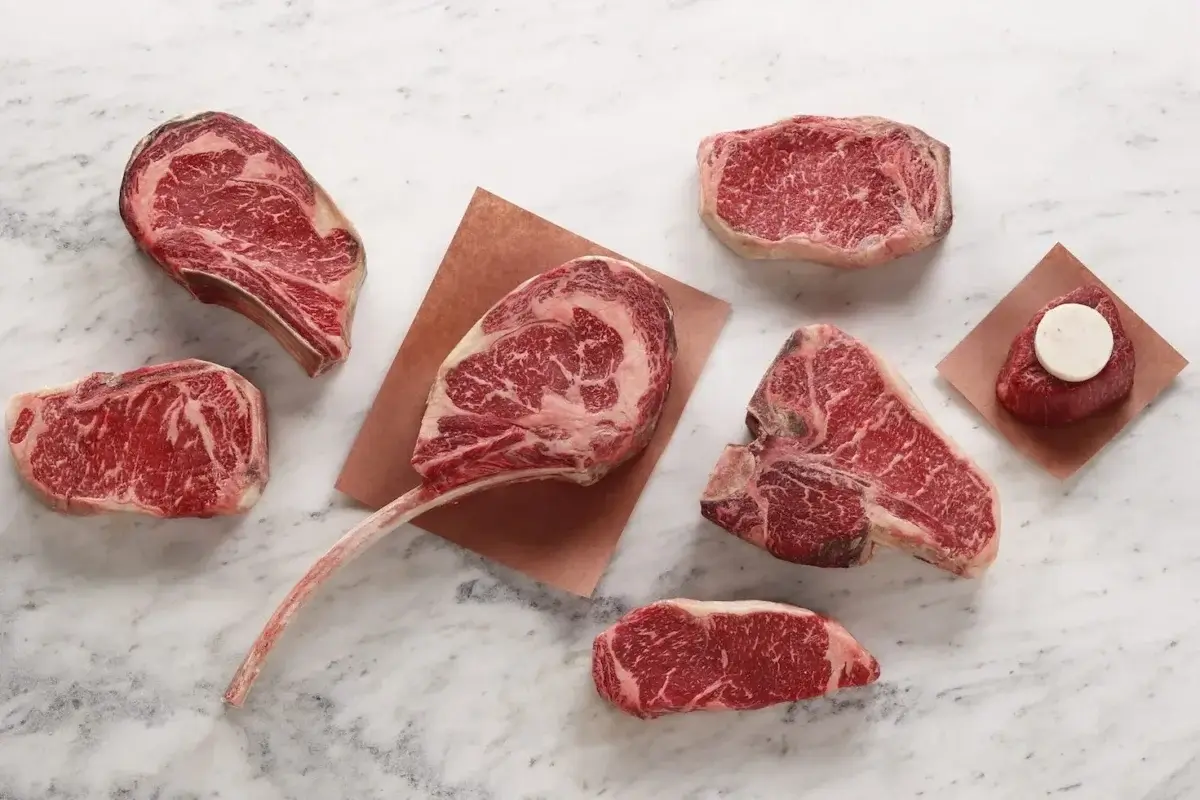
American Wagyu cattle exemplify how blending desirable qualities from diverse breeds creates success. By crossbreeding renowned Japanese Wagyu with esteemed American kinds like Angus or Hereford, this intriguing fusion marries East and West. The outcome combines prized Wagyu traits—unrivaled marbling and melt-in-your-mouth texture—with robust flavor trademarks of American breeds. This exciting mix yields a special beef variety possessing the Japanese breed’s unparalleled marbling and extraordinary tenderness along with the full-bodied taste synonymous with American cattle.
The beginning of American Wagyu traces back to the end of the 1900s when some progressive cattle farmers imported a small group of Japanese Wagyu cows to the United States. Their goal was to crossbreed these Wagyu cattle with typical American breeds to accomplish a meat quality that would connect with American tastes while having the respected qualities of Japanese Wagyu.
The crossbreeding trial yielded results beyond what was anticipated. American Wagyu merges the silky tenderness and abundant marbling—those coveted intramuscular fat parcels that make Wagyu so unique—with the more considerable size and beefier flavor of American livestock breeds. This synergistic impact gives American Wagyu an individual character of its own, one that appeals to customers who savor both the feel of Japanese Wagyu and the familiar taste of American breeds.
American Wagyu cattle are often cared for with great care and focus on replicating Japanese practices. Their feeding plan usually has a high-grain diet. This is believed to improve the marbling of the beef. These cattle also live comfortably without stress. It is thought that a calm and peaceful atmosphere leads to better marbling and, ultimately, better quality meat.
The result of this work is a beef that is richly marbled and possesses a rich, deep flavor. It serves as an icon showcasing the success of breeding different cattle breeds together and the meticulous raising of cattle. American Wagyu represents more than just a blending of breeds—it demonstrates a cross-cultural appreciation and respect for the craft of cattle rearing. This appreciation transforms into an indulgent and unforgettable culinary experience, whether in the form of a premium steak or a succulent burger. American Wagyu guarantees a subtly complex taste, exceptionally tender and gratifying.
What is Australian Wagyu
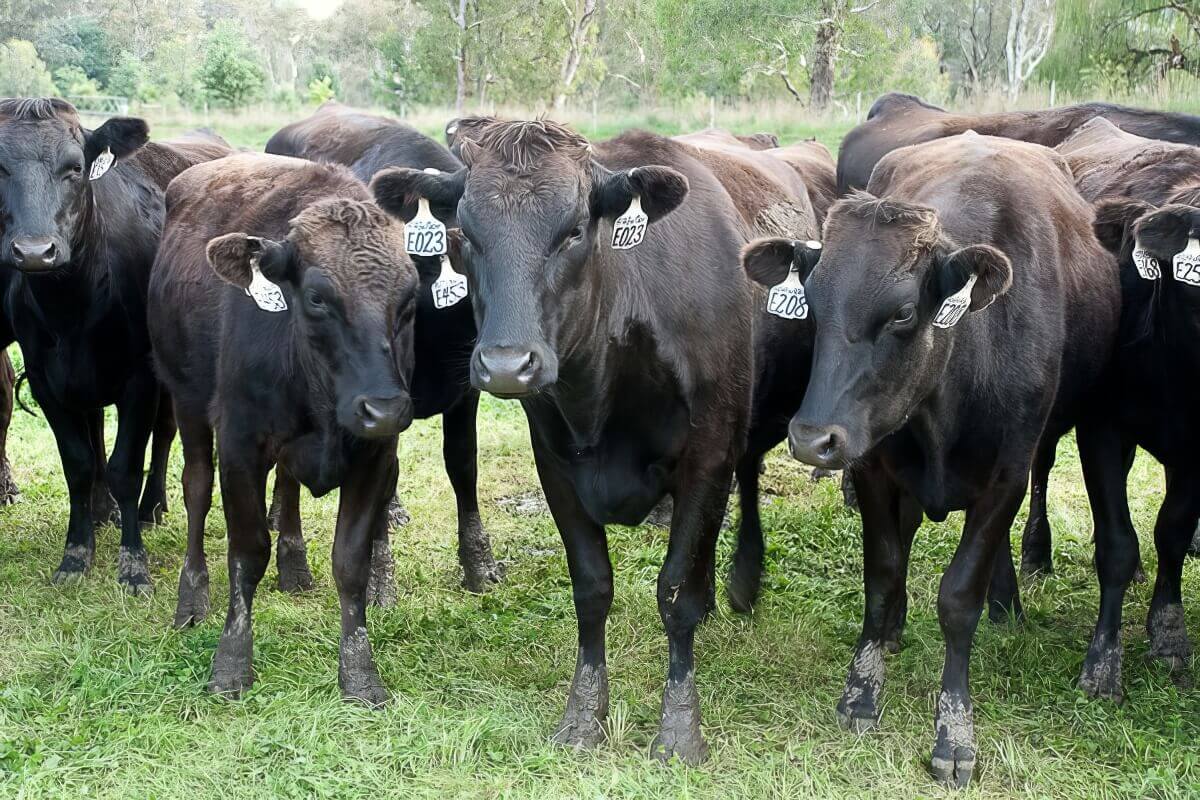
Australia’s venture into Wagyu beef production demonstrates its pioneering spirit in agriculture. Utilizing the nation’s expansive grasslands, agreeable climate, and dedication to excellence, Australia has cultivated a respected Wagyu industry appreciated both within Australia and globally.
Australian cattle that are bred from Japanese Wagyu and Australian breeds like Angus and Holstein produce a uniquely delicious meat. The Wagyu side contributes excellent marbling and tenderness while the Australian breeds make the cattle hardy and able to thrive in local conditions. Combining genetic strengths in this way creates an extraordinary variety valued for its balanced qualities.
At the core of Australian Wagyu’s attraction lies its significant marbling. Comparable to its Japanese equivalent, Australian Wagyu beef demonstrates an intricate design of intramuscular fat, which is accountable for its abundant, creamy taste and silky texture. The marbling is so pivotal to its quality that the Australian Wagyu grading system, similar to the Japanese one, greatly depends on the scope and caliber of this marbling.
Farms that produce Australian Wagyu cattle adhere to strict guidelines for raising and feeding cows.These guidelines take ideas from traditional Japanese methods while also including practices suited for Australia’s environment. The cows may eat a diet rich in grains for an extended period, sometimes up to 500 days, to encourage high-quality marbling to develop. This close attention to detail includes all parts of the cows’ lives, from their food and living conditions to their general well-being, with minimizing stress seen as necessary for making top-quality beef.
Australian Wagyu beef has become renowned due to careful agricultural methods. This cattle variety delivers a deep, rich taste and supremely soft texture that is relished globally. Both beef aficionados and master chefs alike have come to admire its luscious flavor and feel, driving its worldwide popularity to greater heights.
Other Regional Varieties
Beyond its origins in Japan, the United States, and Australia, Kobe beef is also raised in other places, such as Canada, New Zealand, and certain European countries. While these breeds may lack the same degree of fame as the more renowned lines, they still provide high-quality marbling and tenderness, showing the worldwide attraction of Kobe beef.
In Canada, the Wagyu cattle are commonly raised on the nation’s expansive and nutrient-wealthy pastures, creating a distinctive taste profile. Meanwhile, New Zealand’s Wagyu beef benefits from the grass-prolific lands of the country and the strict animal welfare benchmarks.
Countries in Europe, like the United Kingdom and Spain, have also started cultivating Wagyu cattle. The beef produced blends the marbling and tenderness synonymous with Wagyu with regional flavors, adding to the variety of Wagyu beef choices accessible to buyers. By crossbreeding local livestock with Wagyu bulls, farmers can benefit from the high quality yet retain distinctive local characteristics. This widens customer appeal and options while respecting tradition. Through such hybridization, European ranchers enrich both the Wagyu name and their own heritages.
Wagyu Grading System
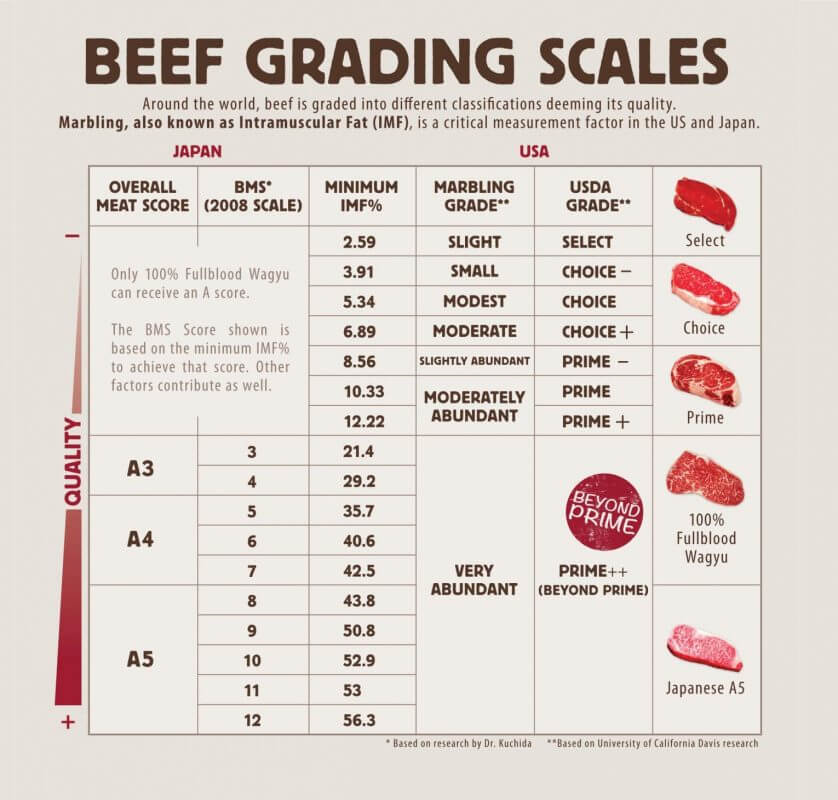
The quality of wagyu beef is often assessed using the grading system adopted in the country of origin. These systems help to determine meat yield, color, texture, and degree of marbling.
Grading methods can differ from one country to another. Knowing these differences can guide your Choice. We’ll look at the grading systems for Wagyu beef in Japan, the United States, and Australia.
- The Japanese grading system: Japan has a rigorous and detailed grading system for Wagyu beef. Their system uses a letter and a number combo. The letter, from A to C, grades how much usable meat there is. A is the best. The number grades the meat’s quality, like marbling, color and brightness, firmness and texture, and fat quality. This scale goes from 1 to 5, 5 being the best. Meaning, A5 is the gold standard of Japanese Wagyu beef. It has the best yield and highest meat quality.
- The American grading system: In America, Wagyu beef is graded by the USDA (United States Department of Agriculture). They focuses mainly on the level of marbling. The USDA grades go from Standard to Select, then Choice, ending at Prime for top marbling level. Prime-grade beef is known for being high-quality, and sometimes matches lower Japanese Wagyu grades. After noticing the high quality of certain American Wagyu cuts, an unofficial rank, “Beyond Prime,” was developed. This classifies the best of American Wagyu.
- Australian grading system: Australia grades its Wagyu beef using the AUS-MEAT grading system. Think of it as kind of like the Japanese system. It gives rankings from 0 to 9+. These depend on things like marbling, the color of the meat and fat, and the size of the muscle in the eye. If a Wagyu cow gets a marbling score of 6 or more, it’s called the “Gold standard.” This is the best of the best in Australian Wagyu.
Here is a comparative table to simplify the understanding:
| Country | Grading System | Grades | Highest Grade | Focus of Grading | Remarks |
|---|---|---|---|---|---|
| Japan | JP BMS (Beef Marbling Standard) | A1 to A5, B1 to B5, C1 to C5 | A5 | Yield and Meat Quality (Marbling, Meat Color and Brightness, Firmness and Texture, and Quality of Fat) | A5 is the highest possible grade, indicating both the best yield (A) and highest meat quality (5). |
| United States | USDA | Standard, Select, Choice, Prime, Beyond Prime (unofficial for Wagyu) | Beyond Prime (unofficial for Wagyu) | Degree of Marbling | Prime is the official highest grade by USDA. “Beyond Prime” is an unofficial grade often used to denote exceptionally high-quality American Wagyu. |
| Australia | AUS-MEAT | 0 to 9+ | 9+ (Gold standard from 6+) | Marbling, Meat Color and Fat Color, and Eye Muscle Area | 6+ and above is classified as “Gold Standard”. The 9+ grade is the pinnacle of Australian Wagyu, reflecting the highest degree of marbling. |
The Taste of Wagyu
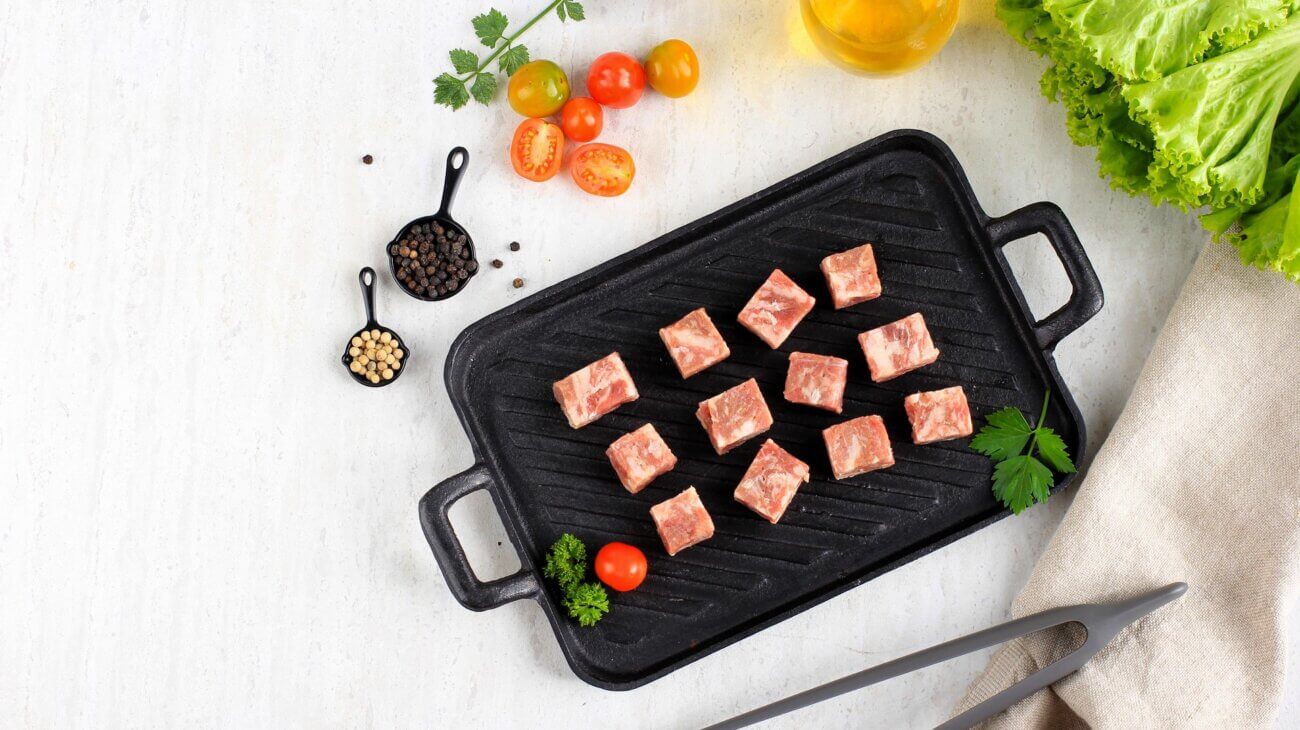
Description of Flavor Profile
Wagyu beef is a joy for the taste buds. You can credit its fantastic flavor to a detail called marbling. Marbling looks like snowflakes of fat within the muscle. It gives Wagyu a taste that’s rich and buttery. It mixes sweet and savory, like a beautiful food dance. When you cook it, the fat melts. This makes each bite melt-in-your-mouth delicious. The flavor is a mix of fancy and straightforward. The taste sticks with you.
Texture and Tenderness
With Wagyu, each bite is tender, like luxury in beef form. Through marbling, the fat is spread evenly. This makes the meat less demanding, more soft. It feels almost like velvet in your mouth. Wagyu’s texture proves that the farmers care for these cows more than anything.
Cooking Methods
Wagyu beef needs special care while cooking because it’s so unique. People often cook it at a lower heat than other types of meat. This keeps the marbling intact and stops the fat from melting too fast. Popular techniques are pan-searing grilling and sous-vide. Pan-searing allows you to cook it quickly and lock in the flavors. Grilling adds a smoky flavor. Sous-vide is a fancy way of cooking where you vacuum seal the meat and cook it slow in a water bath. This results in perfect cooking from one end to the other.
Health Benefits
Wagyu beef is not just tasty. It’s nutritious. It’s packed with protein. It offers iron, which carries oxygen in your body. It supplies zinc, keeping your immune system strong. Plus, it has B vitamins, key for turning food into energy.
Unique Fat Composition:
Here’s another fact. The fat in Wagyu beef is different. Compared to regular beef, it has more “good” fats, especially oleic acid. These fats help keep your heart healthy. They might lower bad cholesterol!
Omega-3 and Omega-6 Fatty Acids:
Wagyu beef is wealthy in Omega-3 and Omega-6 fatty acids. These two things are essential, and our bodies can’t make them. They make your brain work well, reduce unhelpful inflammation, and may protect your heart.
The Magic of Conjugated Linoleic Acid (CLA):
CLA is a type of fat. Wagyu beef has lots of it. Studies show that CLA does good stuff like reducing body fat and improving how your body uses insulin, which might even fight cancer.
Wagyu beef is a superstar in the meat world. It’s a treat with its intense fat marbling, tender meat, and rich, buttery taste. Its name, ‘Wagyu,’ means ‘Japanese cow.’ The breeders in Japan stick to strict rules and special feeding practices. This all makes Wagyu beef not just a food delight but also a symbol of Japanese culture.
“What is Wagyu beef” is more than its tasty flavor. It also involves understanding the skill and custom needed to make it. Wagyu beef shows a commitment to quality and tradition. It sets a mark in food. Its good flavor shows how quality farming is critical to the food we eat. For food lovers, Wagyu beef symbolizes custom, quality, and good taste.
References
Several sources were consulted to ensure accurate and up-to-date information in preparing this article. These include:
- Japanese Wagyu Beef Official Promotion (2021). Wagyu Registry Association.
- Miyazaki, Y. (2022). The Art of Wagyu: A Gastronomic Guide. Tokyo: Tsukiji Shokan Publishing.
- American Wagyu Association. (2023). American Wagyu: History and Influence.
- Johnson, R. & Schmidt, G. (2022). The Health Benefits of Wagyu Beef: A Review. Journal of Food and Nutrition Research.